Brief: Here are the essential things to do after installing Ubuntu 17.10 in order to give yourself a better and smoother experience after the fresh installation of Ubuntu 17.10.
Ubuntu 17.10 has been released. By now, you might have seen the new features in Ubuntu 17.10 and I recommend you should also start looking at Ubuntu 18.04 release date. If you are giving 17.10 a try with a fresh Ubuntu installation, here are a few things to do after installing Ubuntu 17.10 that will make your experience with Ubuntu better.
Update: You can also check a newer article on things to do after installing Ubuntu 18.04.
If you are a new Ubuntu user, I also recommend reading this getting started with Ubuntu guide that will help you to understand Ubuntu and use it easily.
Things to do after installing Ubuntu 17.10
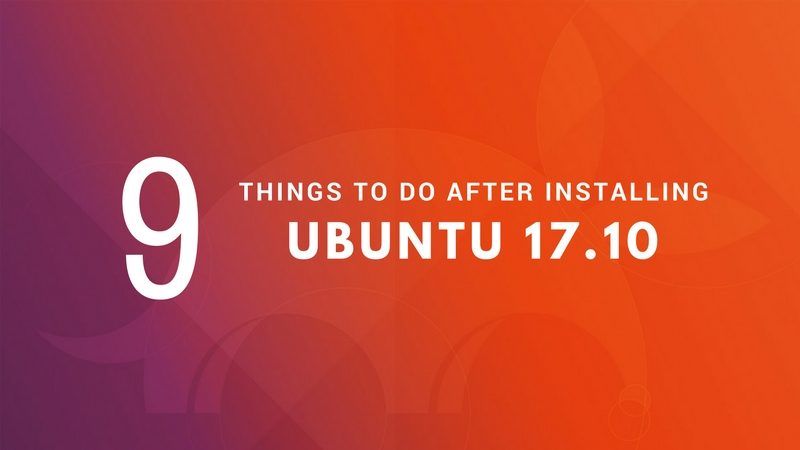
Just to be clear, what to do after installing Ubuntu 17.10 depends upon you, the user. If you are into graphic design, you’ll want to install plenty of Linux graphics tools. If you are into Linux gaming, you might look for more Linux games and configure your graphics card for that. If you are into programming, you would want to install programming tools, editors, IDEs etc.
This list is a generic list of things that should be useful for most users if not all. The steps mentioned here are surely helpful to most new Ubuntu users.
I have created a video so that it will be easier for you to see these steps in action. Do subscribe to our YouTube channel for more Ubuntu and Linux videos.
So, let’s begin with the written list of things to do after installing Ubuntu 17.10:
1. Update your system
Whenever you do a fresh installation of Ubuntu, update the system. It may sound strange because you just installed a fresh OS but still, you must run the updater.
It has been my experience that if you don’t update the system right after installing Ubuntu, you might face issues while trying to install a new program. You may even see fewer applications to install.
To update your system, press Super Key (Windows Key) to launch the Activity Overview and look for Software Updater. Run this program. It will look for available updates. Install them.

Alternatively, you can use the following command in the terminal (Ctrl+Alt+T):
sudo apt update && sudo apt upgrade2. Enable Canonical Partner repositories
Another must do thing is to enable Canonical Partner repositories. Ubuntu has a variety of software available from its repositories. You can find it in the Software Center.
But you get even more software in the Software Center if you enable the Canonical Partner repositories. This additional repository consists of third-party software, often proprietary stuff, that have been tested by Ubuntu.
Go to Activity Overview by pressing Super Key (Windows key), and look for Software & Updates:

Open it and under the Other Software tab, check the option of Canonical Partners.
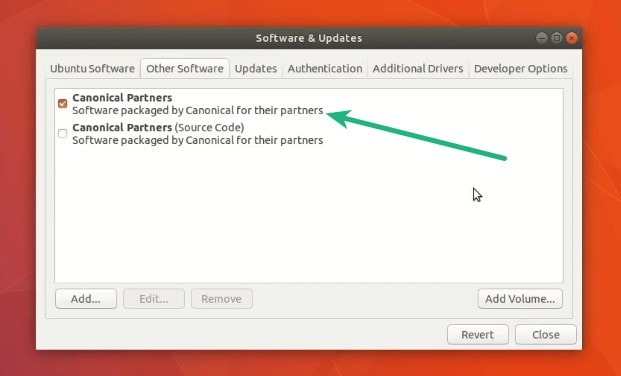
It will ask for your password and update the software sources. Once it completes, you’ll find more applications to install in the Software Center.
3. Install media codecs
By default, Ubuntu doesn’t provide a number of media codecs because of copyright issues. But it does provide an easy way to install these media codecs so that you could play MP3, MPEG4, AVI and a number of other media files.
You can install these media codecs thanks to Ubuntu Restricted Extra package. Click on the link below to install it from the Software Center.
Install Ubuntu Restricted Extras
Or alternatively, use the command below to install it:
sudo apt-get install ubuntu-restricted-extras4. Install software from the Software Center
Once you have upgraded the system and installed the codecs, it’s time to install some software. If you are rather new to Ubuntu, I suggest reading this detailed beginner’s guide to installing software in Ubuntu.
Basically, there are various ways to install software in Ubuntu. The easiest, most convenient and most reliable way is to use the Software Center to find and install new software.
You can open the Software Center to look for software to install in this graphical tool.
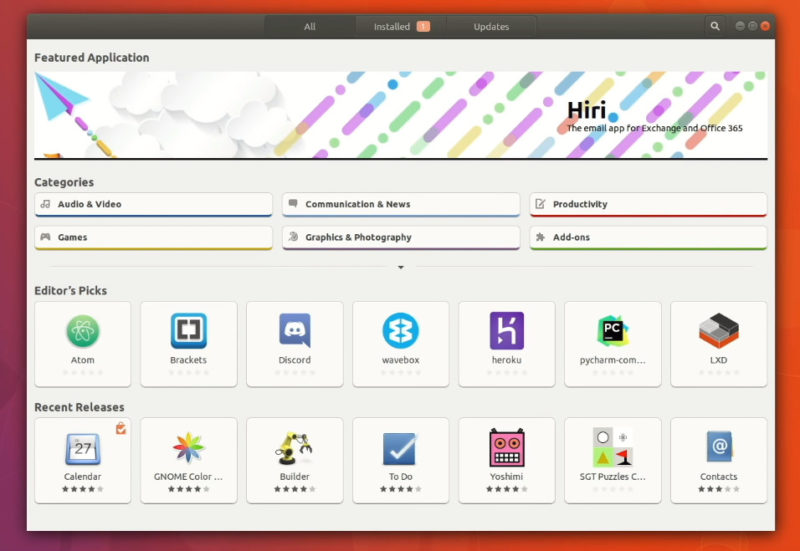
Alternatively, if you know what you are going to install just type the sudo apt install <program_name> command to install it. Read the beginners guide to using apt commands in Ubuntu for more details on this command.
It is up to you but I can surely suggest a few applications that are on my list of things to do after installing Ubuntu 17.10.
- VLC media player for videos
- GIMP – Photoshop alternative for Linux
- Shutter – Screenshot application
- Calibre – eBook management tool
- Chromium – Open Source web browser
- Kazam – Screen recorder tool
- Gdebi – Lightweight package installer for .deb packages.
You can also refer to this list of must-have Linux applications for more software recommendations.
5. Install software from the Web
You’ll find plenty of applications in the Software Center. But you’ll also find that many applications are not included in the Software Center despite the fact that they support Linux.
Actually, a number of software vendors package their software in .deb format that can be easily installed in Ubuntu. You can download the .deb files from their official websites and install them by double-clicking on it.
Some of the main software that I download and install from the web is:
- Chrome Web browser
- Slack communication tool
- Dropbox cloud storage service
- Skype (the new beta version)
- Viber instant messenger
6. Tweak the look and feel of Ubuntu 17.10
Ubuntu 17.10 uses GNOME desktop environment. While the default setup looks good, it doesn’t mean you cannot change it.
You can do some visual changes from the System Settings. Just search for System Settings in the Activity Overview and start it.
In the System Settings, you can change the wallpaper of the desktop and the lock screen, you can change the position of the dock (launcher on the left side), change power settings, Bluetooth etc. In short, you can find many settings that you can change as per your need.
Remember that there is no “set to default” button here so try to keep a track of changes you make to your system.

Let’s go further with tweaking the Ubuntu 17.10 system. You can install new icons and themes. But to change the themes and icons, you need to use GNOME Tweaks tool.
As some readers suggested, it is installed by default now. But if you cannot find it, you can install it via the Software Center or you can use the command below to install it:
sudo apt install gnome-tweak-toolOnce installed, you can install new themes and icons.
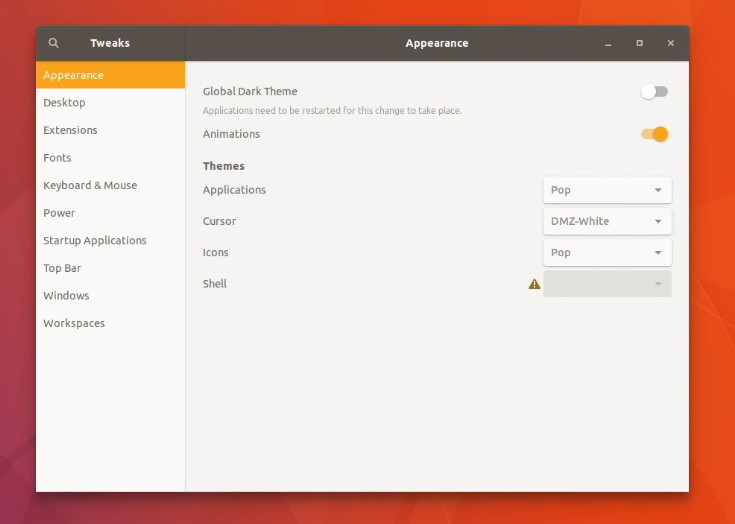
You can also use GNOME extensions to further enhance the looks and capabilities of your system. Customization is a big topic and this is why I have written an entire article on GNOME customization in Ubuntu 17.10.
7. Prolong your battery and prevent overheating
One of the best ways to prevent overheating in Linux laptops is to use TLP. Just install TLP and forget it. It works wonder at controlling CPU temperature and thus prolonging your laptops’ battery life in the long run.
You can install it using the command below in a terminal:
sudo apt install tlp tlp-rdwOnce installed, run the command below to start it:
sudo tlp startNo need for any configuration changes (you can do that if you know what you are doing). It will be automatically started with each boot and tweak your system’s power consumption.
8. Save your eyes with Nightlight
Nightlight is another of my favorite things. Keeping your eyes safe at night from the computer screen is very important. Reducing blue light helps to reduce eye strain.
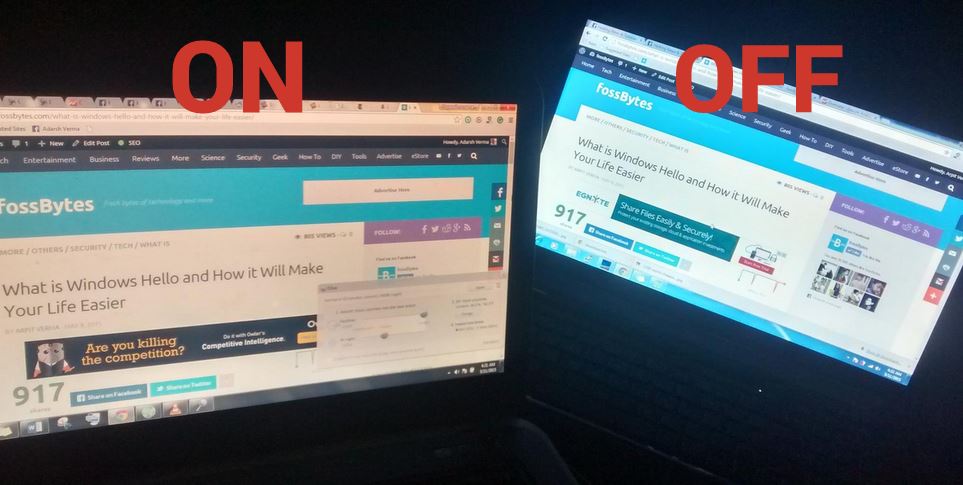
GNOME provides a built-in Night Light option, which you can activate in the System Settings.
Just go to System Settings-> Devices-> Displays and turn on the Night Light option.
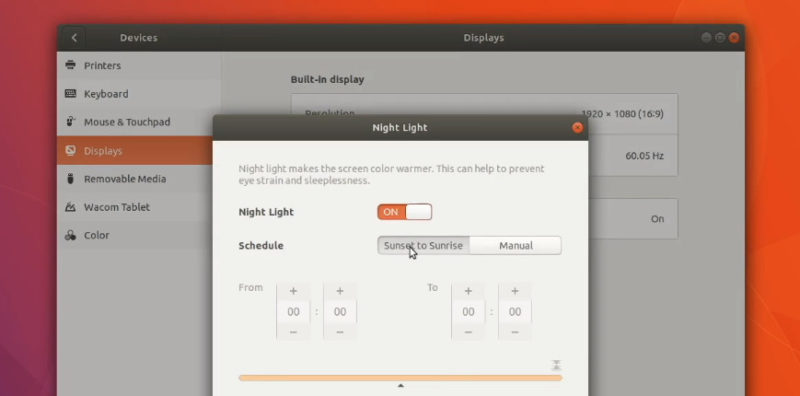
9. Moving back to Xorg from Wayland (if needed)
I have separately discussed moving back to Xorg from Wayland in Ubuntu 17.10. As Ubuntu 17.10 moves away from the legacy Xorg display server, not all desktop applications are compatible with the new Wayland display server.
I faced issues with screen recording tools and with apps that depend on geolocation such as RedShift. For this reason, I switched to Xorg from Wayland. It won’t change anything from the end user’s point of view, so you can be sure that switching to Xorg won’t harm your system.
To switch to Xorg from Wayland, log out of your system, then, at the login screen, click the gear icon and select Ubuntu on Xorg option:

You can switch to Wayland in the same way,
What do you do after installing Ubuntu?
Those were my suggestions for getting started with Ubuntu. Now it’s your turn. What steps do you recommend as things to do after installing Ubuntu 17.10? The comment section is all yours.

